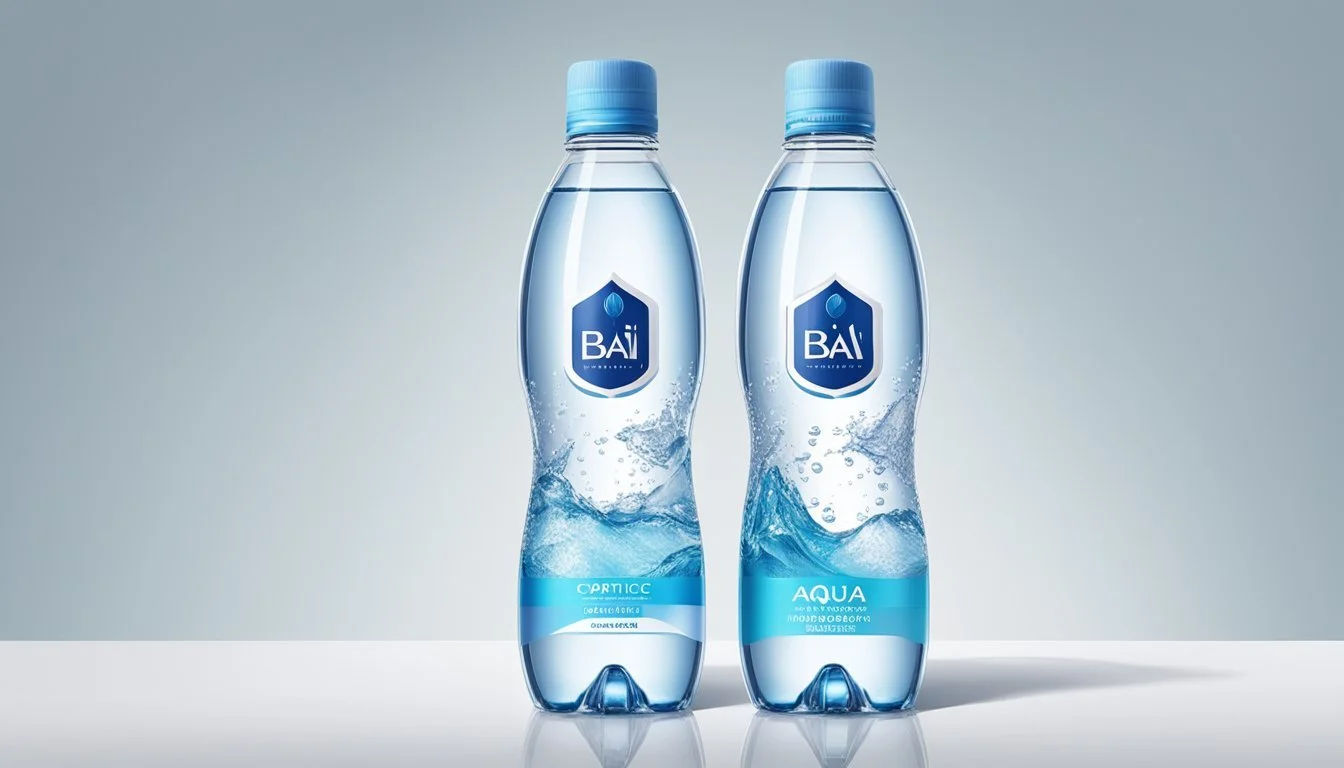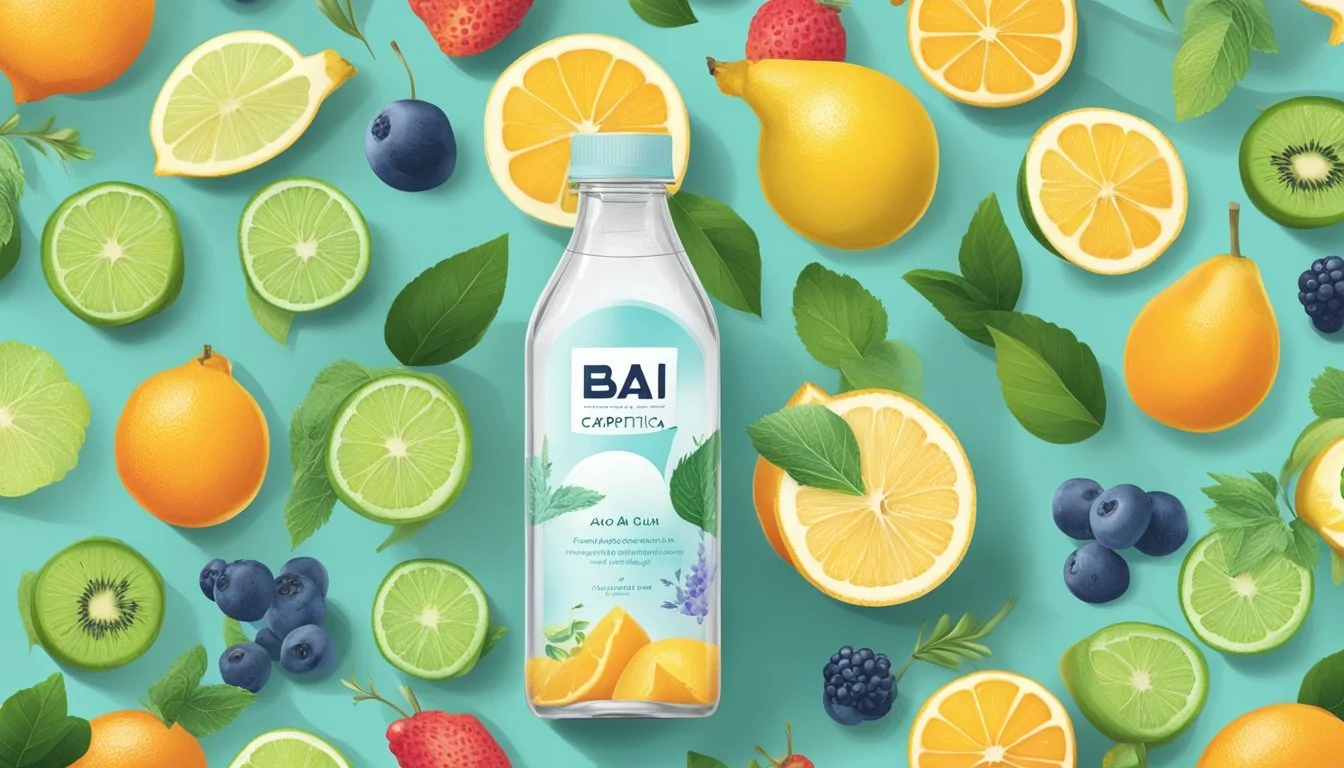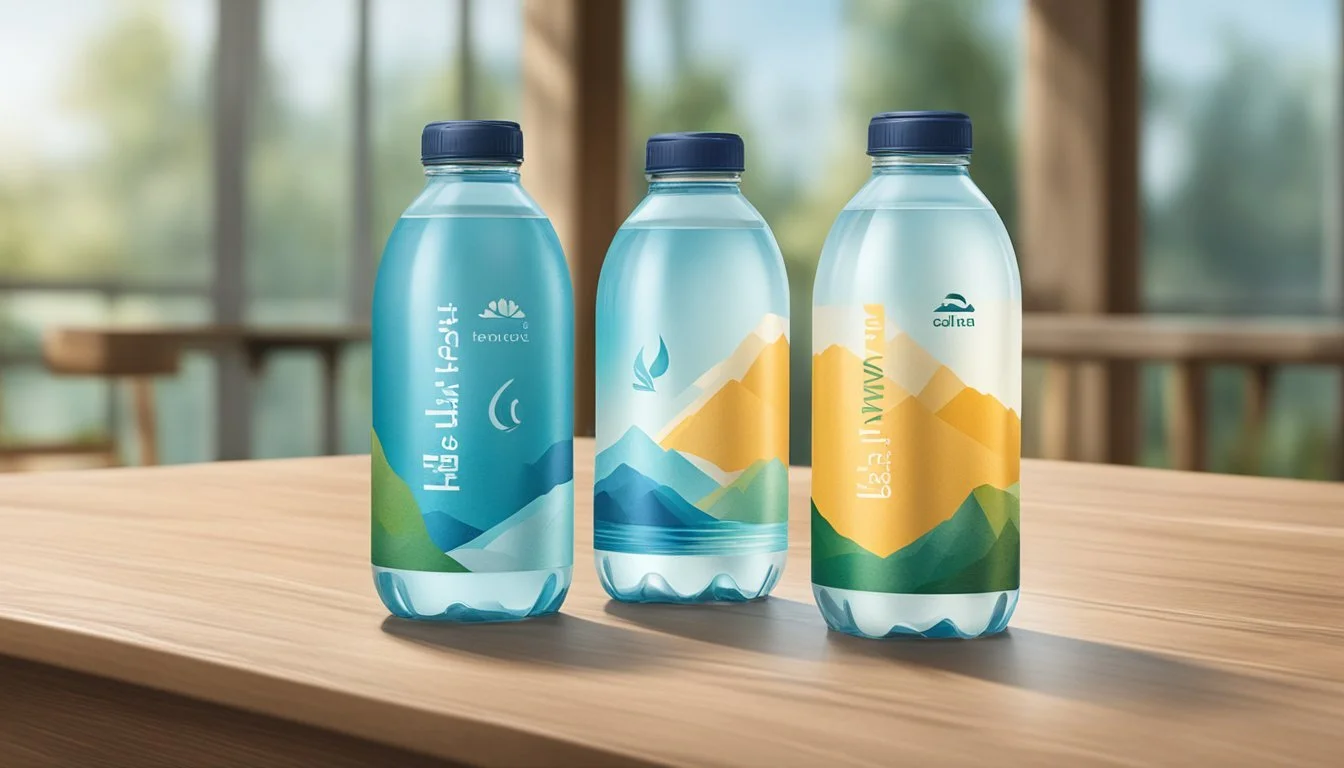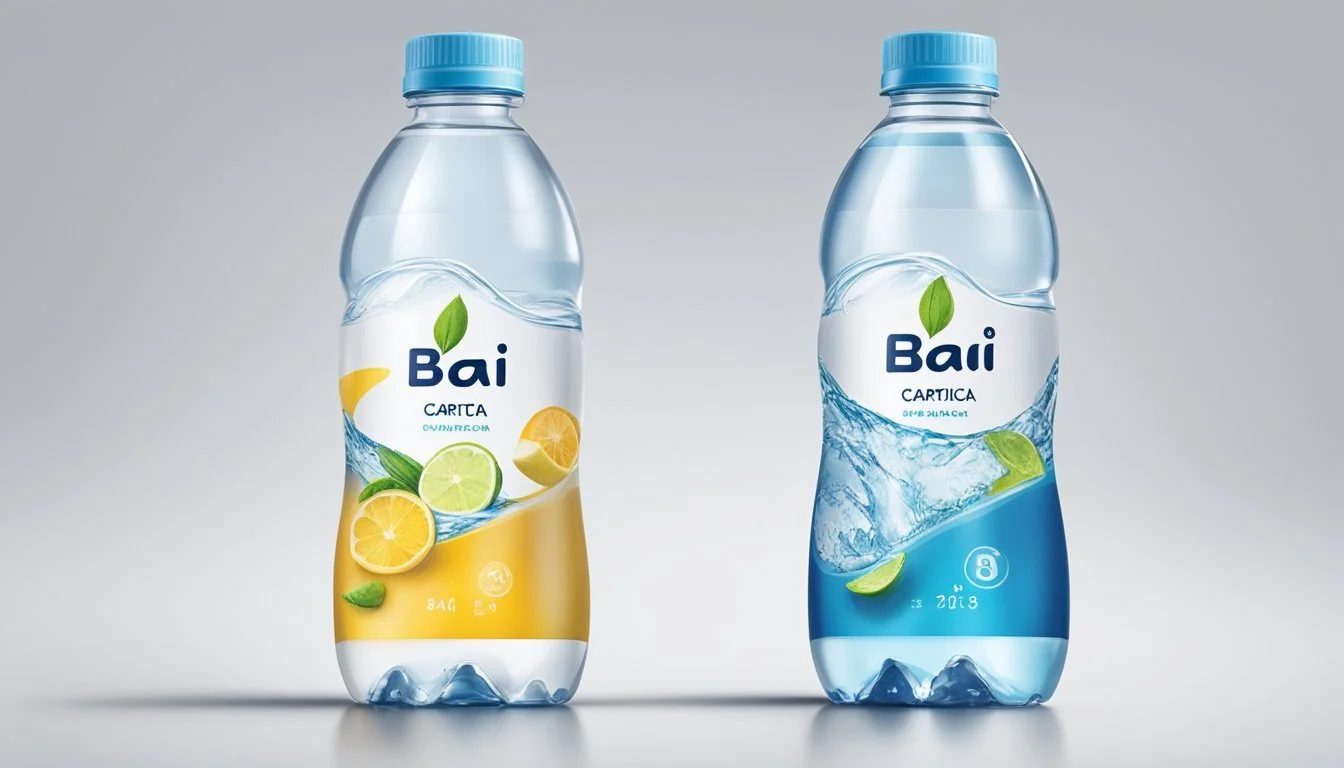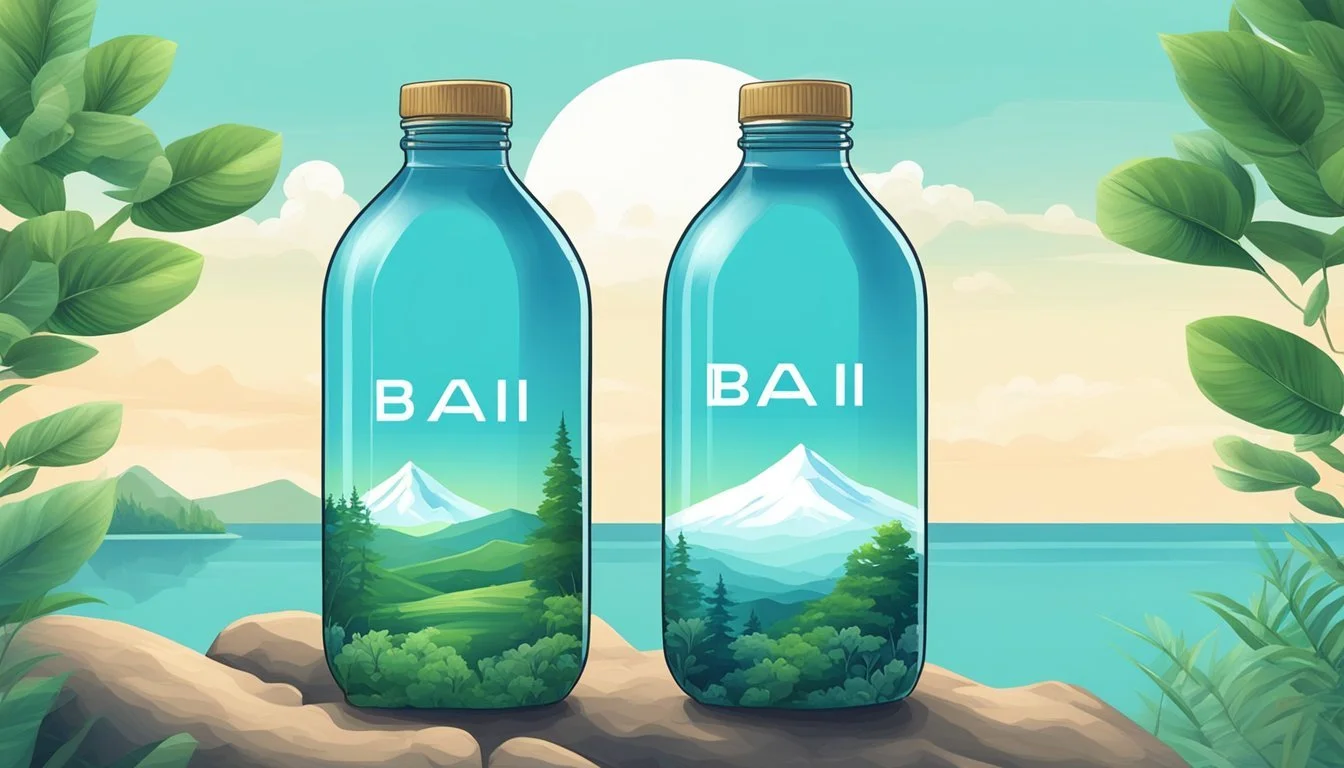Bai vs. Aqua Carpatica
Comparing Premium Bottled Waters
Choosing bottled water often comes down to balancing health benefits, taste, and cost. Bai and AQUA Carpatica are two brands that stand out in the market, each offering unique features. Bai focuses on antioxidant infusions and a variety of flavors, thanks to its use of coffee fruit extract. AQUA Carpatica, on the other hand, prides itself on its natural mineral content and nitrate-free water, presenting a different kind of health proposition.
When deciding between Bai and AQUA Carpatica, the main factors to consider are personal health goals and taste preference. Bai provides hydration along with antioxidants, while AQUA Carpatica offers pure, nitrate-free mineral water at an accessible price. Both brands have their merits, targeting different aspects of what consumers might look for in their bottled water.
Ultimately, the choice between Bai and AQUA Carpatica hinges on whether one values additional health benefits like antioxidants or prefers the purity and mineral content of natural water. This comparison aims to help readers make an informed decision based on detailed analysis of both brands.
Overview of Bai and Aqua Carpatica
Bai and Aqua Carpatica are two prominent bottled water brands that cater to different consumer preferences. Each brand has a distinct history and market presence that sets them apart in the competitive bottled water industry.
Brand History and Origin
Bai was founded in 2009 by entrepreneur Ben Weiss in Princeton, New Jersey. Initially known for its antioxidant-infused drinks, Bai expanded its range to include bottled water. Bai is sourced from the pristine springs in Canada and undergoes a careful purification process. The brand’s focus is on providing enhanced hydration with minimal additives, aligning with health-conscious consumers who seek natural and beneficial beverages.
Aqua Carpatica, on the other hand, hails from the Carpathian Mountains in Romania. The brand prides itself on its naturally nitrate-free and low-sodium water, sourced from deep within these ancient mountains. Aqua Carpatica was launched to offer pure and clean water, capitalizing on the natural purity of its source. The brand emphasizes its commitment to preserving the natural state of its water and maintaining high-quality standards.
Bottled Water Market Presence
Bai has managed to carve out a significant niche in the U.S. market with its antioxidant-infused drinks. Despite being newer to the bottled water segment, Bai leverages its existing brand loyalty and robust distribution network. The company’s marketing campaigns often highlight the health benefits and purity of their water, appealing to a wide range of consumers, from fitness enthusiasts to everyday shoppers.
Aqua Carpatica is well-established in Europe, particularly in markets that value mineral-rich and naturally pure water. Its presence in the U.S. is growing, especially among consumers who are discerning about water quality. Aqua Carpatica’s unique selling points, such as being free from nitrates and having a low sodium content, resonate with health-conscious buyers. The brand uses strategic partnerships and endorsements to enhance its visibility and credibility in the premium water category.
Source and Natural Purity
Aqua Carpatica and Bai offer distinct experiences based on their sources and the natural purity of their water.
Water Source Comparison
Aqua Carpatica sources its water from natural springs in the Carpathian Mountains of Romania. These springs are known for their pristine environments and mineral-rich sources. Aqua Carpatica emphasizes their water's nitrate-free quality and minimal human intervention, ensuring a naturally pure product.
Bai primarily offers flavored water infused with antioxidants. While the exact source of the water used in Bai's products can vary, it often includes purified tap water, enhanced with natural ingredients for flavor and health benefits.
Comparison Summary:
Aqua Carpatica: Natural spring water, nitrate-free, Carpathian Mountains.
Bai: Purified, flavor-infused, variable sources.
Environmental Impact of Sources
Aqua Carpatica: The extraction processes from natural springs in the Carpathian Mountains are designed to be ecologically sustainable. This includes minimal disruption to the local ecosystem and protection of water sources from contamination.
Bai: Since Bai uses purified water, the environmental impact is mainly due to purification processes and the sourcing of additives and packaging. The flavored water industry can sometimes have a larger carbon footprint due to ingredients and transportation.
Comparison Summary:
Aqua Carpatica: Sustainable extraction, protection of natural springs.
Bai: Larger carbon footprint, dependence on purification and additives.
Health and Nutritional Benefits
Both Bai and Aqua Carpatica offer unique health and nutritional benefits, focusing on mineral content, hydration, and pH levels.
Mineral Content and Nutritional Value
Bai Water contains antioxidants derived from coffee fruit extract and tea extract, which contribute to its health benefits. It includes selenium, known for heart disease prevention and immune system support. Bai's low-calorie profile—just ten calories per bottle—and the absence of artificial sweeteners make it a health-conscious option.
Aqua Carpatica Natural Still Mineral Water, sourced from the Carpathian Springs in Romania, is nitrate-free and contains essential minerals. The water is particularly known for its purity and natural mineral content such as calcium and magnesium. The absence of nitrates enhances its safety and makes it a favorable choice for individuals looking for pure hydration.
Hydration and PH Levels
Bai Water is infused with alkaline minerals to achieve a pH level of 7.5 or higher. The alkaline nature complements its antioxidant properties, potentially promoting better hydration and balancing the body’s pH levels. The careful processing ensures that each bottle delivers clean, filtered, and fortified water.
Aqua Carpatica's pH balance ranges naturally near 7.4, aligning with the body's natural pH. This balance aids in efficient hydration and can be gentler on the stomach. The water’s natural mineral composition supports this, providing a refreshing and healthful drinking experience.
Both options highlight the importance of hydration and proper pH balance, benefiting overall hydration and bodily function.
Taste and Flavor Profiles
Bai and Aqua Carpatica offer distinctly different experiences in terms of taste and flavor profiles. While Bai incorporates flavors and sweeteners, Aqua Carpatica focuses on the natural purity of its water.
Taste Test Reviews
In taste tests, Bai often highlights its unique flavors derived from natural fruit extracts, resulting in a slightly sweetened beverage with a flavorful kick. Among the popular tastes are exotic fruit blends that make it appealing to those who prefer a flavored water option.
On the contrary, Aqua Carpatica is praised for its clean and naturally refreshing taste. Being nitrate-free and having low sodium content, it maintains a purer water profile. This makes it an excellent choice for individuals who prefer a crisp, unadulterated drinking experience.
Flavors and Additives
Bai is known for its wide array of flavors, such as pomegranate, watermelon, and blueberry, infused with natural flavors and antioxidants. Each bottle contains 1 gram of sugar and 10 calories, creating a lightly sweetened but health-conscious option. The inclusion of antioxidants from coffee fruit extract distinguishes its nutritional edge.
On the other hand, Aqua Carpatica prides itself on being free from additives. With no added sugars, artificial sweeteners, or flavors, it aims to provide a purely natural drinking experience. This simplicity appeals to those looking for hydration without any added ingredients, keeping the water’s taste as pure as possible.
Product Range and Variants
The product lines of Bai and Aqua Carpatica offer a variety of options. These include traditional still and sparkling waters, as well as specialty waters infused with unique ingredients.
Still vs. Sparkling Waters
Aqua Carpatica offers both still and sparkling natural mineral waters. Their still water is known for being nitrate-free, making it a healthy choice. The naturally sparkling water of Aqua Carpatica adds a refreshing fizz without any artificial additives.
Bai primarily focuses on flavored waters. Although Bai does not produce traditional still or sparkling waters, they have a range of lightly carbonated beverages. Bai’s carbonated drinks combine hydration benefits with pleasant flavors, offering an alternative to plain sparkling water.
Specialty Waters and Infusions
Bai distinguishes itself with a diverse range of flavored waters. These beverages are low in sugar, containing only 1 gram per bottle, and are infused with antioxidants from coffee fruit extract and tea extract. Bai's products often include additional vitamins like Vitamin C, catering to those who seek both hydration and nutritional benefits.
Aqua Carpatica specializes in pure mineral water, focusing on natural benefits without added flavors or infusions. They maintain a strong emphasis on the purity and mineral content of their water, appealing to consumers who prefer natural hydration.
Brand Types Key Ingredients Aqua Carpatica Still & Sparkling Natural Minerals Bai Flavored & Carbonated Coffee Fruit, Tea Extract, Vitamins
For those prioritizing natural and pure mineral sources, Aqua Carpatica stands out. In contrast, Bai offers innovative, flavored options with added health benefits.
Packaging and Sustainability
The packaging of Bai and Aqua Carpatica plays a crucial role in their environmental impact and sustainability. Key factors include the materials used and the companies' initiatives for recycling and reducing their carbon footprint.
Plastic vs. Glass vs. Carton
Bai predominantly uses PET plastic bottles, which are recyclable. PET plastic is lightweight and commonly recycled, but it still contributes to plastic waste if not disposed of properly. Aqua Carpatica offers products in both plastic bottles and glass bottles, providing an alternative to those conscious about plastic use.
While glass bottles are reusable and often seen as more premium, they require more energy to produce and transport due to their weight. This increases the overall carbon footprint. Neither brand currently offers carton packaging, which is more sustainable than plastic and glass but less common in the bottled water market.
Environmental Initiatives and Recycling
Bai and Aqua Carpatica both prioritize sustainability in their business practices. Bai focuses on using recyclable materials like PET plastic and has implemented strategies to reduce its overall environmental footprint.
Aqua Carpatica emphasizes the importance of preserving natural resources and reducing waste through recyclable packaging solutions. They also invest in renewable energy sources and conservation efforts to minimize their impact on the environment. These initiatives ensure that both brands are working towards a more sustainable future.
Price Comparison and Value
When comparing Bai and Aqua Carpatica bottled waters, it is essential to examine both the cost per bottle and the perceived value in terms of quality and health benefits. Each brand offers distinct features that impact their positions in the market.
Cost per Bottle and Bulk Options
Aqua Carpatica offers Still Natural Mineral Water at 65p for a 500ml bottle and Naturally Sparkling Natural Mineral Water at 69p for the same size. Bai Water's pricing, on the other hand, usually varies based on the retailer. On Amazon, a pack of twelve 530ml Bai bottles typically costs around $20.
For those looking to purchase in bulk, retailers often provide discounts, making it more cost-effective. Bulk buying options for both brands can significantly lower the price per bottle, benefiting regular consumers of these products.
Value for Money Analysis
Aqua Carpatica boasts nitrate-free water, giving it a unique health advantage. It is marketed at a reasonable price compared to other premium mineral waters, thus offering good value, especially to health-conscious customers.
Bai Water offers low-calorie, gluten-free beverages with antioxidants derived from coffee and tea extracts, appealing primarily to those seeking functional drinks with health benefits. Despite its slightly higher price in smaller quantities, its nutritional benefits and the lack of artificial sweeteners may justify the cost for many consumers.
Aqua Carpatica's straightforward mineral content versus Bai's enhanced nutritional profile makes the value proposition heavily dependent on consumer preferences. Factors like desired hydration benefits and additional health attributes play key roles in determining the best value.
Health-Conscious Consumer Considerations
Health-conscious consumers often weigh various factors when selecting bottled water, including low-calorie options and the presence of beneficial additives like antioxidants and vitamins. Bai and Aqua Carpatica both meet some of these critical needs but also have distinct attributes.
Low-Calorie and Sugar-Free Options
For those mindful of calorie intake and sugar content, Bai offers an appealing choice. Bai beverages are marketed as low-calorie drinks, containing only ten calories per bottle. They are also free from added sugars, relying on stevia leaf extract and erythritol as natural sweeteners.
Aqua Carpatica, primarily known for its mineral water, is naturally zero-calorie. This makes it a straightforward option for consumers who prefer plain water without any flavorings or sweeteners. It also lacks added sugars and artificial additives.
Given these characteristics, Bai can be viewed as a flavored, low-calorie option ideal for those who still want some sweetness without the added sugar. Aqua Carpatica remains a natural, unflavored alternative, appealing to those who prioritize pure hydration without any extra calories.
Antioxidants and Vitamin Enrichment
Bai stands out with its addition of antioxidants, sourced primarily from coffee fruit extract and tea extract. The presence of these antioxidants can offer nutritional benefits, such as reducing oxidative stress in the body. Specific flavors, like Kula Watermelon, not only provide antioxidants but also utilize fruit juice as natural sweeteners.
Aqua Carpatica focuses more on its mineral content, including calcium and magnesium, but does not typically add antioxidants or vitamins. Its primary claim to health benefits is its naturally occurring mineral composition, which can support overall well-being.
For those seeking added nutritional benefits like antioxidants, Bai offers an enhanced option. Aqua Carpatica, while not enriched with vitamins or antioxidants, provides a pure source of hydration with essential minerals.
Dietary and Lifestyle Alignment
Bai and Aqua Carpatica cater to different dietary needs and lifestyle preferences. Their unique formulations and benefits appeal to various health-conscious individuals.
Vegan and Gluten-Free Certifications
Bai Water and Aqua Carpatica both align well with vegan and gluten-free lifestyles. Bai Water is gluten-free and does not contain any animal products, making it suitable for vegans. This product also avoids artificial sweeteners and added sugars.
Aqua Carpatica, on the other hand, is naturally nitrate-free and appeals to those looking for pure, uncontaminated hydration sources. With no gluten-containing ingredients, Aqua Carpatica fits well within a gluten-free diet. Its natural mineral content supports various health benefits, including replenishment of electrolytes.
Comparison for Fitness and Diet Regimens
For fitness enthusiasts, Bai Water contains antioxidants from coffee fruit extract and tea extract, which may help reduce oxidative stress from exercise. With only 10 calories per bottle and minimal sugar, it is a good option for those monitoring calorie intake.
Aqua Carpatica provides a different benefit with its high mineral content, particularly beneficial for athletes needing natural electrolyte replenishment. The still and sparkling options allow for diverse preferences, whether consumed during intense workouts or as a refreshing everyday drink. Both brands offer hydration solutions that fit well within varied fitness and dietary routines.
Final Verdict
To make an informed decision between Bai and Aqua Carpatica, it's important to evaluate their unique features, taste preferences, and expert insights.
Pros and Cons Summary
Bai:
Pros:
Infused with antioxidants from coffee fruit extract
Contains Vitamin C
Alkaline minerals raise the pH to 7.5
Low calorie (10 calories) and low sugar (1g)
Cons:
Added ingredients may not appeal to purists
Slightly more processed due to added minerals and vitamins
Aqua Carpatica:
Pros:
Naturally nitrate-free
Low sodium level
Pure spring water
No added ingredients, providing a clean, natural taste
Cons:
May lack the additional health benefits from antioxidants and vitamins
Flavor might be too subtle for those who prefer a more distinctive taste
Expert Opinions and Recommendations
Water Sommelier Insights:
Many water sommeliers highlight the natural purity of Aqua Carpatica, praising its clean taste and low nitrate content.
Bai's antioxidant blend is often appreciated for its potential health benefits, especially among those looking for functional beverages.
Taste Preference:
Bai: Offers a mild sweetness due to the added minerals and antioxidant content.
Aqua Carpatica: Known for its crisp, natural flavor without any added elements.
Safe Drinking Water:
Both brands provide safe drinking water, meeting high standards of purification and quality.
Expert Recommendation:
Aqua Carpatica is ideal for those who prefer naturally pure, unaltered water with minimal additives.
Bai is recommended for consumers seeking additional health benefits like antioxidants and vitamins in their water.
Choosing between Bai and Aqua Carpatica ultimately depends on individual priorities such as taste preference, natural purity, or additional health benefits.

